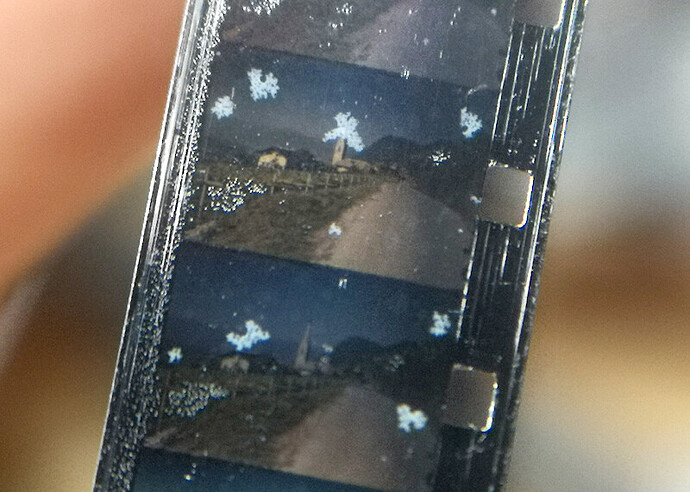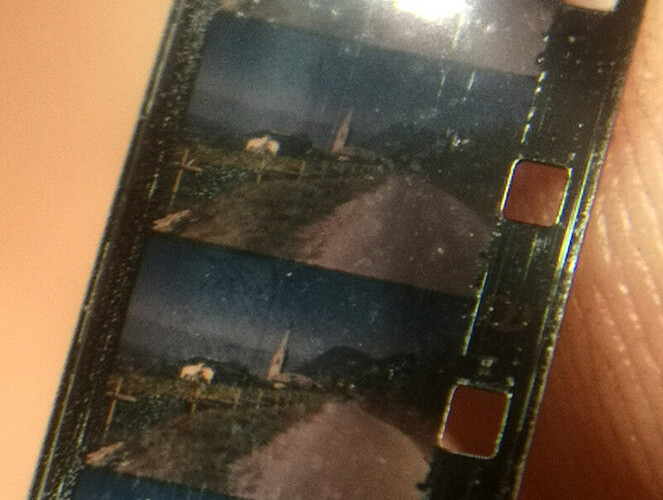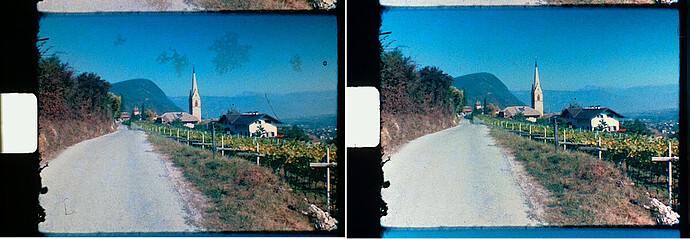Just a short update. Cleaning with 99% Isopropyl Alcohol and a soft tissue did help with a lot of the issues of the example film described above.
However, as predicted by ToddRuel, the mold parts were not at all reduced or changed by my cleaning efforts with Isopropyl. Here’s a new image of this film (already cleaned with Isopropyl)
which shows that this material has taken quite some beating over time. The clearly visible white patches are the mold.
After some additional internet research I actually found out the following: it seems that in the beginning of the 80’s, Agfa Moviechrome, Perutz and other material was coated with something derived from bee wax - which is ideal for mold to develop.
Well, it turns out that the solution is very simple: just use a cloth and destilled water to wipe off the mold. Gets off easily. Just make sure to dry the film after application of the destilled water. Here’s the same part of the movie after the destilled water/cloth treatment, followed by a Isopropyl/cloth cleaning step:
Clearly, the parts previously affected by the mold are gone. Here’s a comparision between the inital scan (left) and the result after cleaning (right)
As a side note, the 99% Isopropyl Alcohol did not affect in any way the splice tape at the cuts of the Super-8 movie.


